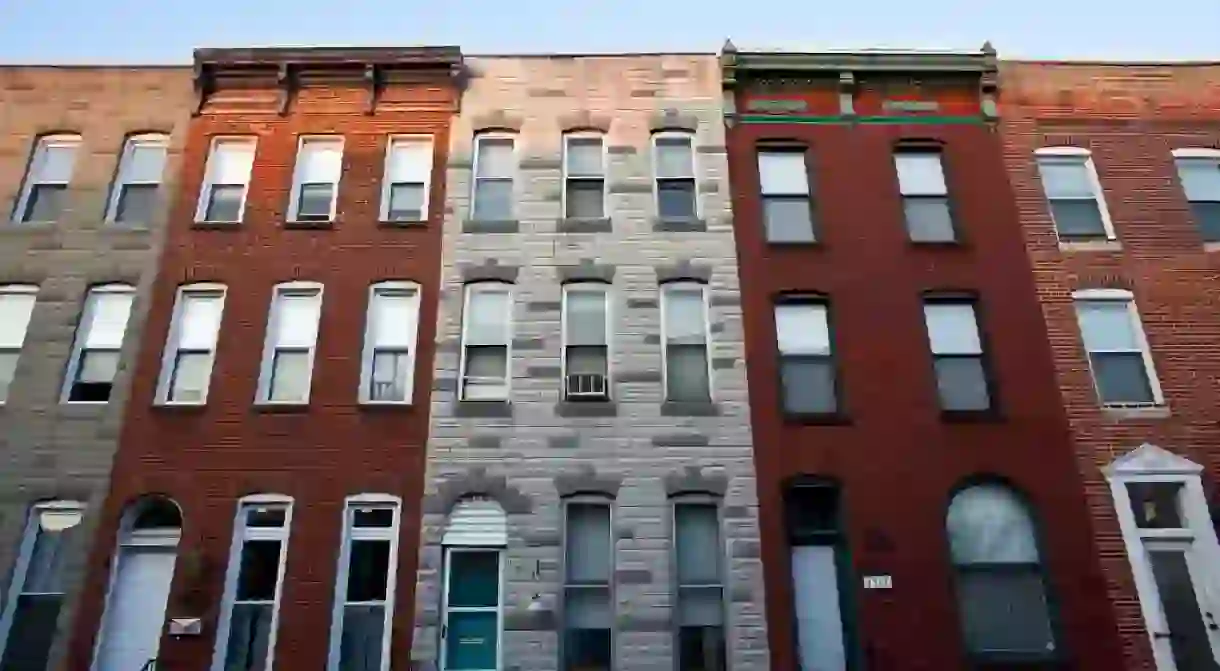The Ultimate Renter’s Guide to Baltimore, MD

Baltimore’s friendly communities, historical architecture, and many attractions make it a unique and fun place to live for renters. But with so many neighborhoods and housing options, it can be tricky to figure out how and where to start looking. Our renter’s guide to Baltimore will give you the tips you need to get started on your search for an awesome place.
Get to know the neighborhoods
Baltimore has over 200 neighborhoods, and each has unique perks and quirks that may help you narrow down your search. Live Baltimore’s interactive neighborhoods map is a great place for renters to start searching; it features a breakdown of neighborhood walkability and transit scores, average prices, and character traits and more. At the same time, try not to give too much weight to neighborhood stereotypes—every locale has its pleasant surprises. Check out the cool areas listed below to start your search.
Canton
Canton is a state historic district and a trendy area for young professional renters, with many amenities like grocery stores and restaurants within safe walking distance. It also borders historic Patterson Park and Waterfront Park and is close to major highway entrances. And if you’re a dog owner, or plan to be one, there’s an off-leash dog park right in the neighborhood to let them loose.

Federal Hill
Federal Hill Historic District attracts people of all ages, with apartment houses and older homes with rooms to let. Right next to the Inner Harbor with hilltop views of the water, Federal Hill is a lively area and home to many independent restaurants and bars. With high walkability and transit scores, it’s easy to get where you need to go.
Locust Point
Next door to Fort McHenry is the neighborhood of Locust Point. It’s known as one of the safest neighborhoods in Baltimore, with a cost of living 3% lower than the city average. With a great sense of community and closeness to the water and Latrobe Park, it’s a cozy but vibrant little neighborhood in which to live.
Where to find listings
Local newspapers and real estate agents are an excellent on-the-ground source for rental listings, as well as the Live Baltimore site, where you can create a profile and customize your search. If you’re a student, check on campus or the school’s website—fellow students often need roommates, and the school itself may have valuable info for finding a place near campus. Larger websites like Roomi or Craigslist can also have decent rental listings, though be careful to read between the lines. Finally, sometimes it’s best to just take a look around the neighborhood for yourself.
Apartment vs. rowhouse
Something unique to Baltimore is the opportunity to rent a rowhouse instead of an apartment for a decent price. But there are some things to consider before making that decision. Rowhome living is best done with a group and requires more upkeep. You’ll need to check with the landlord on what you’ll be responsible for providing—i.e., garbage cans that follow city trash disposal laws, yard maintenance, and so on. On the apartment side, there’s more flexibility in living alone vs. with roommates, and newer apartment buildings, while pricier, may come with amenities like gyms and LEED standards.

Check the rules
While this is a general rule of thumb for renting in any city, Baltimore has some specific things to look out for. Many apartments in Baltimore don’t provide parking, and the street parking laws can be stringent. While you may be able to get a parking permit, it’s not always possible, so if you have a car, check your block’s parking laws before signing that lease. If renting a rowhouse, check on maintenance rules like grass trimming and other yard maintenance to see if it’s something you can handle.
Be careful with oral leases
In Maryland, oral leases between landlords and renters are legally binding. While it makes for a more flexible arrangement and there’s no legal jargon to sort through, the dangers tend to outweigh the positives. Without having everything in writing, you’ll have to rely on your memory and your landlord’s goodwill if conflicts arise. In general, oral leases are not recommended, but you should know that they can only be guaranteed for under a year and that renters under oral lease still have the right to a formal eviction process, among other things.

Talk to the locals
Unlike Washington D.C. or New York, which get a lot of transfers, most people living in Baltimore have been around for years. They’ll have a lot more experience with the local rules and customs. Scope out people who live in the neighborhoods you’re interested in and ask if they’d be willing to share what they know. It will give you a better feel for what it’d be like to live there than what the ads and sites can provide. To start, Live Baltimore has a listing of Neighborhood Know-It-Alls who are ready and willing to help.













